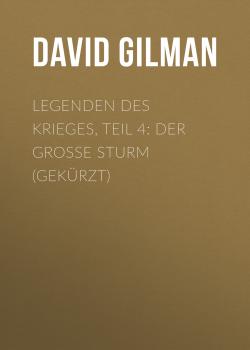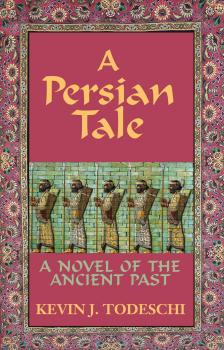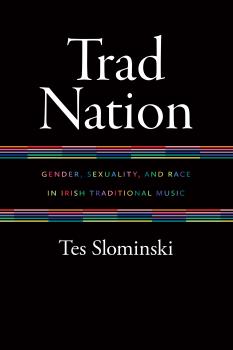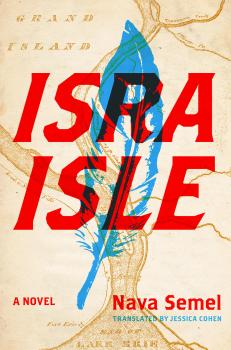ТОП просматриваемых книг сайта:
Историческая литература
Различные книги в жанре Историческая литература, доступные для чтения и скачиванияАннотация
Crumbling Indian and Spanish ruins, lost gold and a modern ranch are all part of The Land where centuries of men and women have lived, loved, fought and died. It is a novel of their hopes, dreams of wealth and power, their lust and greed. Symbolic of what this piece of earth means is the spear point made by Silver Moon and cast aside to be found by each successive generation. The spear point fills each possessor with the vision of the past and these ghostly visions have a determining effect on the fate of those who hold it in their hands. In the end, it is this ancient spear point that saves the ranch and its owner from disaster. ROBERT K. SWISHER JR. has been a ranch foreman and a mountain guide. An individual who knows the outdoors and western history, he has successfully combined these interests in stories, poems and novels. He is also the author of “The Last Narrow Gauge Train Robbery,” “Fatal Destiny,” “Only Magic,” “Love Lies Bleeding,” “How Far The Mountain” and “Last Day In Paradise,” all from Sunstone Press.
Аннотация
Эви Форбс предана своей семье. Все мужчины в ней – шахтеры. Она с детства привыкла видеть страдания людей рабочего поселка: несчастные случаи и гибель близких, жестокость и несправедливость начальников. Она чувствует себя спасительницей семьи, когда устраивается работать в Истерли Холл – поместье лорда Брамптона, хозяина шахт. В господском доме Эми сразу же сталкивается с пренебрежением и тиранией хозяев, ленью, предательством и наглостью других слуг. Однако с помощью друзей, любви и собственного таланта она смело идет вперед, к своей цели – выйти «из-под лестницы». Но в жизнь вмешивается война. Все уходят на фронт. Жизнь превращается в бесконечное ожидание роковых писем о судьбе родных. Все, что остается делать представителям обоих классов, – ждать Рождества, когда их мужчины вернутся…
Аннотация
Who was King Arthur? That question has delighted, inspired, and confounded people for centuries. Was he a mighty warrior who united the kingdoms of Britain to fight off the Saxons and their allies after the Roman Legions withdrew? Was he the champion of chivalry who was involved in a love triangle that ended up destroying all that he had built? Was he a larger-than-life warrior surrounded by magical weapons and beings? Or was he just a man trying to defend his homeland from invaders? Award-winning author William Speir peels back the layers of myths and legends to tell a story that is rooted in history. Arthur, King is a novel about the man who led a kingdom besieged by enemies and filled with ambitious warlords plotting to become the next High King of Britain.
Аннотация
Early in the 4th century, a new doctrine threatened to split the Christian churches apart. The Roman Emperor Constantine I grew tired of the debate. He needed a unified church to control his empire in ways that his legions couldn't. In 325 AD, he called a meeting of Christian bishops at Nicaea to end the debate once and for all. The Council of Nicaea created the blueprint for the Christian Churches going forward, but was it the blueprint for an institution dedicated to the salvation of mankind, or for a tool of statecraft to benefit the Emperor? Nicaea – The Rise of the Imperial Church follows the men who became the focus of the council meeting held in Nicaea: Arias (the priest who led the opposition to the new doctrine), Alexander (the bishop who championed the new doctrine), Hosius (the boyhood friend of the Emperor and the force behind the creation of the Imperial Church), Athanasius (Alexander's successor and Hosius' ally), and Emperor Constantine (who wanted a church that he could use to control the people of his Empire).
Аннотация
In the days leading up to the War of Spanish Succession (also known as Queen Anne's War), a frigate from England's Navy is dispatched on a secret mission to the Americas. The Captain's orders are simple: stop the French and Spanish treasure fleets from reaching Europe and funding the coming war against England. How he is commanded to carry out those orders, however, is something no English Naval Officer had ever been ordered to do. King's Ransom is a tale rooted in history but with the intensity of a modern thriller. It is a 2014 Royal Palm Literary Award winner for Historical Fiction.
Аннотация
For millennia, the Arab world has been one of extremes: a place where wind-swept desert plains coexist with tropical climes and rich vegetation. It is a place where the splendor and majesty of some of the largest and oldest cities on earth provide a stark contrast to wandering desert nomads who travel with all belongings in tow–a place where warring peoples are as common as a depth of spiritual commitment found few places on earth. This novel traces the development of the legendary city of Ishlandoen, a great metropolis that arose on the plains of the Persian desert and eventually gave birth to the Zoroastrian faith. The story follows the life of a reluctant leader, Ravi, who was trained from his birth to bring a scattered desert people together into one nation. It is the story of a powerful nemesis, the emperor of Lydia, who resides in pampered luxury while his kingdom is rampant with unspeakable crimes of lack. It is the tale of a mysterious Egyptian holy man who possesses mystical powers found nowhere else on earth. And it is the story of two young lovers who are separated by a desert and are destined to find one another. Woven together with accounts of magic and mystery, desert skirmishes and intrigue, passion and one’s search for meaning, the story explores the wonder of ancient Persia. Within its pages, A Persian Tale describes the formation of a new city upon the hills and the plains of a desert, destined to forever alter the history of its people, laying the foundation for one of the most important religious movements that the world would ever know.
Аннотация
<P>Just how «Irish» is traditional Irish music? Trad Nation combines ethnography, oral history, and archival research to challenge the longstanding practice of using ethnic nationalism as a framework for understanding vernacular music traditions. Tes Slominski argues that ethnic nationalism hinders this music's development today in an increasingly multiethnic Ireland and in the transnational Irish traditional music scene. She discusses early 21st century women whose musical lives were shaped by Ireland's struggles to become a nation; follows the career of Julia Clifford, a fiddler who lived much of her life in England, and explores the experiences of women, LGBTQ+ musicians, and musicians of color in the early 21st century.</P>
Аннотация
Winner of the Modern Language Association’s Fania & Yaakov Leviant Memorial Prize in Yiddish Studies (2018) Ellen Cassedy and Yermiyahu Ahron Taub (the translators) on encountering Blume Lempel’s stories wrote: «When we began reading and translating, we didn’t know we were going to find a mother drawn into an incestuous relationship with her blind son. We didn’t know we’d meet a young woman lying on the table at an abortion clinic. We didn’t know we’d meet a middle-aged woman full of erotic imaginings as she readies herself for a blind date. Buried in this forgotten Yiddish-language material, we found modernist stories and modernist story-telling techniques – imagine reading Gabriel Garcia Marquez with the conversational touch of Grace Paley.»Lempel (1907–1999) was one of a small number of writers in the United States who wrote in Yiddish into the 1990s. Though many of her stories opened a window on the Old World and the Holocaust, she did not confine herself to these landscapes or themes. She often wrote about the margins of society, and about subjects considered untouchable. her prize-winning fiction is remarkable for its psychological acuity, its unflinching examination of erotic themes and gender relations, and its technical virtuosity. Mirroring the dislocation of mostly women protagonists, her stories move between present and past, Old World and New, dream and reality.While many of her stories opened a window on the Old World and the Holocaust, she also wrote about the margins of society, about subjects considered untouchable, among them abortion, prostitution, women's erotic imaginings, and even incest. She illuminated the inner lives of her characters—mostly women. Her storylines migrate between past and present, Old World and New, dream and reality, modern-day New York and prewar Poland, bedtime story and passionate romance, and old-age dementia and girlhood dreams.Immigrating to New York when Hitler rose to power, Blume Lempel began publishing her short stories in 1945. By the 1970s her work had become known throughout the Yiddish literary world. When she died in 1999, the Yiddish paper Forverts wrote: «Yiddish literature has lost one of its most remarkable women writers.»Ellen Cassedy, translator, is author of the award-winning study «We Are Here», about the Lithuanian Holocaust. With her colleague Yermiyahu Ahron Taub, they received the Yiddish Book Center 2012 Translation Prize for translating Blume Lempel. Yermiyahu Ahron Taub is the author of several books of poetry, including «Prayers of a Heretic/Tfiles fun an apikoyres» (2013),"Uncle Feygele"(2011), and «What Stillness Illuminated/Vos shtilkayt hot baloykhtn (2008).»
Аннотация
This novel is inspired by a true historical event. Before Theodore Herzl there was Mordecai Manuel Noah, an American journalist, diplomat, playwright, and visionary. In September 1825 he bought Grand Island, downriver from Niagara Falls, from the local Native Americans as a place of refuge for the Jewish people and called it “Ararat.” But no Jews came. What if they had followed Noah’s call? In Nava Semel’s alternate history Jews from throughout the world flee persecution and come to Ararat. Isra Isle becomes the smallest state in the US. Israel does not exist, and there was no Holocaust. In exploring this what-if scenario, Semel stimulates new thinking about memory, Jewish/Israeli identity, attitudes toward minorities, women in top political positions, and the place of cultural heritage.The novel is divided into three parts. Part 1, a detective story, opens in September 2001 when Liam Emanuel, an Israeli descendant of Noah, learns about and inherits this island. He leaves Israel intending to reclaim this “Promised Land” in America. Shortly after he arrives in America Liam disappears. Simon T. Lenox, a Native American police investigator, tries to recover Israel’s “missing son.” Part 2 flashes back to the time and events surrounding Mordecai Noah’s purchase of the island from the local Native Americans. Part 3 poses an alternate history: the rise of a successful modern Jewish city-state, Isra Isle, on the northern New York and Canadian border—a metropolis that looks remarkably like New York City both before and after 9/11—in which the Jewish female governor campaigns to become president of the United States.Nava Semel has published novels, short stories, poetry, plays, children's books, and a number of TV scripts. Her books have been translated and published in many countries. Her book, Becoming Gershona, received the 1990 National Jewish Book Award in the US.










